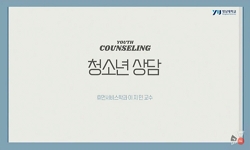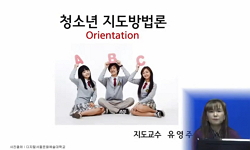This study was composed of two parts. The first part of this study was to determine what problems there are in the operations of youth counseling centers. The second part was to outline a plan that will improve the operational efficiency of these yout...
http://chineseinput.net/에서 pinyin(병음)방식으로 중국어를 변환할 수 있습니다.
변환된 중국어를 복사하여 사용하시면 됩니다.
- 中文 을 입력하시려면 zhongwen을 입력하시고 space를누르시면됩니다.
- 北京 을 입력하시려면 beijing을 입력하시고 space를 누르시면 됩니다.
청소년상담실 프로그램이용 실태와 개선방안 = A Study on the Present Conditions of and the Improvement Plan for Youth Counseling Centers: Focusing on Youth Counseling Centers of In-cheon Metropolitan City
한글로보기https://www.riss.kr/link?id=A108342219
- 저자
- 발행기관
- 학술지명
- 권호사항
-
발행연도
2013
-
작성언어
-
- 주제어
-
KDC
338
-
자료형태
학술저널
-
수록면
23-45(23쪽)
- 제공처
-
0
상세조회 -
0
다운로드
부가정보
다국어 초록 (Multilingual Abstract)
This study was composed of two parts. The first part of this study was to determine what problems there are in the operations of youth counseling centers. The second part was to outline a plan that will improve the operational efficiency of these youth counseling centers. This study was based on the opinions of middle and high school students who used the counseling centers. It examined their thoughts about normal problems faced in life, their mental state, their use of counseling centers, and their ideas for improvements to the counseling centers. In this study one hundred and sixty-five (165) students were surveyed. They were students who had participated in the counseling program of the youth counseling centers in In-cheon. Eighty-three (83) of the participants were male and eighty-two (82) were female. There were forty-one (41) middle school students, seventy-five (75) academic high school students, and forty-nine (49) technical high school students. In order to quantify the data collected, the ANOVA Verification program with SPSS Win12.0 software was used to verify the frequency and percentage of each question and the difference between each group. First, the youth counseling centers need to become an autonomous entity. They need to be allowed the freedom to create and maintain different counseling programs to suit the needs of the community in which they are located. The counseling centers also need to create long term goals taking into consideration the conditions in their unique community. Second, currently there is a lack of counseling facilities andthese facilities are staffed by unqualified counselors. Instead of expecting ideal effects from counseling according to counseling theory, the present situation needs to be changed. More counseling facilities should be built. These facilities should select, train, and place more qualified counselors. With these changes it can be expected that the quality of counseling will improve and the effects of counseling will be greater. Third, a consistent method of evaluation needs to be developed. Regularly evaluating the operation of the youth counseling centers will increase the efficiency of the counseling centers operations. The centers should be evaluated in several different aspects. These are recruitment of volunteer workers, training of their workers, the management of the centers, the contributions of the centers to their communities, and the benefits the members of the community receive. Fourth, students who had problems with their friends, sex, and money showed a high rate of using the youth counseling centers. The frequency of these problems is low because their school grades and their future career are the two biggest problems teenagers face. However, students who do have problems with friends, sex, and money used and received positive results from the youth counseling centers. Actually, there were two groups of students who used the youth counseling centers. The first group showed a high level of satisfaction with their family and home life. The other group had a lower level of satisfaction with their family and home life. The first group, with a high level of satisfaction, needed to be counseled about studies, grades, and what career to choose after graduating from high school. The other group needed to be counseled about friends, the opposite sex, trouble with their parents, etc. Especially consistent problems the students had were shown to be worried about school courses, grades, and their future careers. These concerns also gave them problems related to their friends. Students who had trouble with their parents and financial difficulties wanted to solve their problems needed counseling about potential capacities and their course of action. Therefore, counselors need to have different counseling plans based on the student’s family financial level and their relationship with their parents and friends.
국문 초록 (Abstract)
본 연구는 청소년상담지원센터 이용경험이 있는 학교 청소년들의 일반적인 생활과 심리상태 그리고 상담실의 이용현황 및 개선방안에 대해 그들의 의견과 생각을 살펴봄으로써, 상담실 운...
본 연구는 청소년상담지원센터 이용경험이 있는 학교 청소년들의 일반적인 생활과 심리상태 그리고 상담실의 이용현황 및 개선방안에 대해 그들의 의견과 생각을 살펴봄으로써, 상담실 운영의 문제점을 도출하고 운영의 효율성을 높이고자 하는 데 목적이 있다. 조사대상은 청소년상담지원센터의 상담프로그램을 이용한 학교의 중학생 41명, 인문계고등학생 75명, 실업계고등학생 49명 등 총 165명(남자83명, 여자82명)이었다. 수집된 설문지에 대한 자료처리는 SPSS Win 12.0 프로그램을 이용하여 각 문항별 빈도 및 백분율, 각 집단 간 차이를 검증하는 ANOVA 및 교차분석을 사용하였다. 본 연구에서 밝혀진 결론을 요약하면 다음과 같다. 첫째, 지방차지단체의 흐름에 맞게 지역차원의 청소년상담지원센터의 활성화를 위해서는 지역사회내의 여건과 특성을 고려하여 청소년들의 요구에 기초하여 자율적이고 특성적인 사업을 개발하고 자치단체별 특성과 여건을 반영한 장기적 목표와 비전을 가져야 할 것이다. 둘째, 청소년상담실의 개선을 위해 대부분의 청소년들이 ‘상담실을 쉽고 편리하게 찾아갈 수 있는 곳에 설치해 줄 것’을 요구하고 있으며, ‘상담실의 공간과 시설을 편안하고 안락하게 만들어 줄 것’, ‘상담실의 수를 증가시켜 줄 것’에 대해 요구하고 있다. 상담실의 위치가 집근처나 학교근처, 시내 등 물리적으로 가까울수록 청소년이 좀 더 쉽게, 많이 이용 할 것으로 기대된다. 다시 말해, 청소년상담실은 누구나 어디에서나 손쉽게 활용할 수 있는 청소년의 생활공간으로 확대ㆍ발전시켜야 하며, 이를 통해 그들에게 보다 전문적이고 체계적인 상담 서비스를 제공해야 할 것이다. 셋째, 상담실 운영의 효율성을 증대하기 위해서는 운영 평가기준을 개발하여야 한다. 상담실 운영에 있어 평가 시 대형 프로그램과 형식적으로 눈에 보이는 서류만이 아니라, 자원 활동 자 발굴, 양성, 관리의 측면과 지역사회 기여도 및 공익성을 함께 평가하여야 한다. 지역주민의 자원 활동 참여는 지역중심으로 청소년상담실을 운영 할 수 있는 가장 중요한 활성화 방안이다. 넷째, 친구갈등, 성과 관련된 문제, 경제적인 곤란함 등을 가장 큰 고민거리라고 꼽은 집단에서 상담실 이용경험 비율이 높게 나타났다. 물론, 청소년들의 주된 고민거리 1, 2 순위가 성적과 진로문제이기 때문에, 친구나 성과 관련된 문제들의 절대적인 빈도는 낮지만, 친구문제나 성에 대한 문제를 심각하게 고민하는 청소년들이 적극적으로 상담실을 활용해왔다고 유추해 볼 수 있다. 실제로 상담실을 이용했던 학생들 중, 가정생활에 대한 만족도가 집단 평균보다 높은 집단의 학생들은 학업과 진로 문제를 상담하기를 희망하고 있지만, 평균 이하의 집단에서는 친구, 이성, 부모 갈등 문제 등을 희망하고 있다. 특히, 이들 학생들을 대상으로 현재 가장 중요한 고민과 상담희망 사항을 교차분석한 결과 이들의 문제거리는 대단히 일관된 것으로 보여 진다. 즉, 진로와 성적에 대해 고민하는 학생들은 학업과 진로 문제를 상담할 것을 희망하고 있다. 이와 같은 문제는 친구 문제와 결부되어 학생들에게 연관된 고민거리를 제공하고 있다. 가정불화는 부모 갈등 문제로, 그리고 경제적인 곤란함은 자신의 잠재능력을 확인하고 싶거나 진로문제를 상담함으로서 해결하고자 하는 욕구를 보여준다. 따라서 상담자는 청소년의 가정 경제 수준이나 부모와의 관계․교우관계 등에 따라 상담 전략을 차별화 시킬 필요가 있다고 할 수 있다.
목차 (Table of Contents)
- Ⅰ. 서론
- Ⅱ. 청소년상담지원센터의 기능 및 실태
- Ⅲ. 인천시 청소년상담센터 이용실태 및 욕구조사
- Ⅳ. 청소년상담실 운영 개선방안
- Ⅴ. 결론 및 제언
- Ⅰ. 서론
- Ⅱ. 청소년상담지원센터의 기능 및 실태
- Ⅲ. 인천시 청소년상담센터 이용실태 및 욕구조사
- Ⅳ. 청소년상담실 운영 개선방안
- Ⅴ. 결론 및 제언
동일학술지(권/호) 다른 논문
-
- 한국교정사회복지학회
- 한주빈(Joo Bin Han)
- 2013
-
노인의 성(性)생활 인식도와 생활만족도의 관계에 관한 연구
- 한국교정사회복지학회
- 윤재실(Jae-Sil Yun)
- 2013




 스콜라
스콜라






